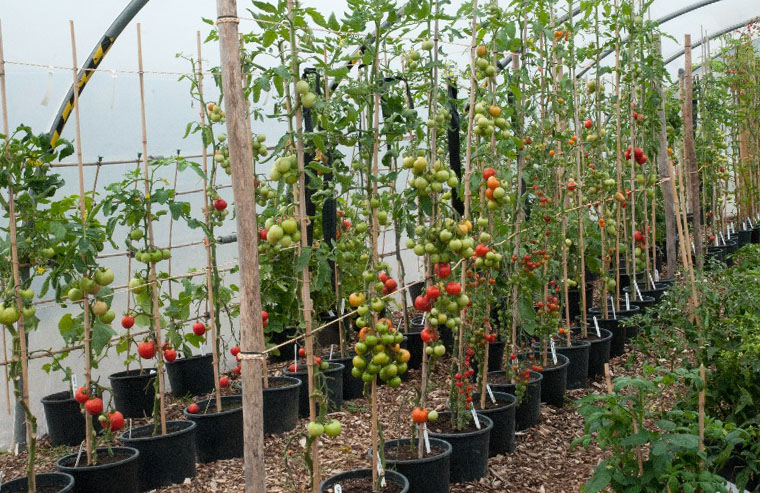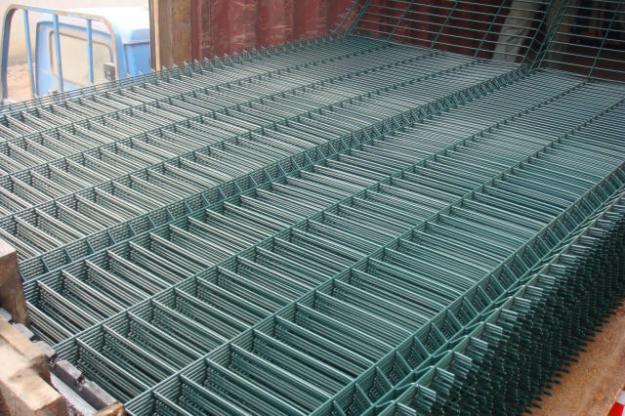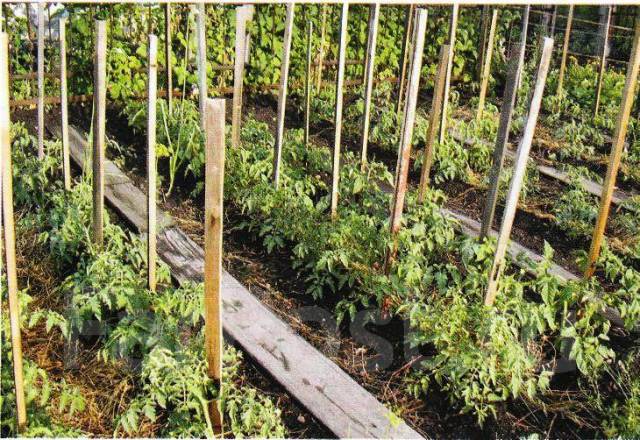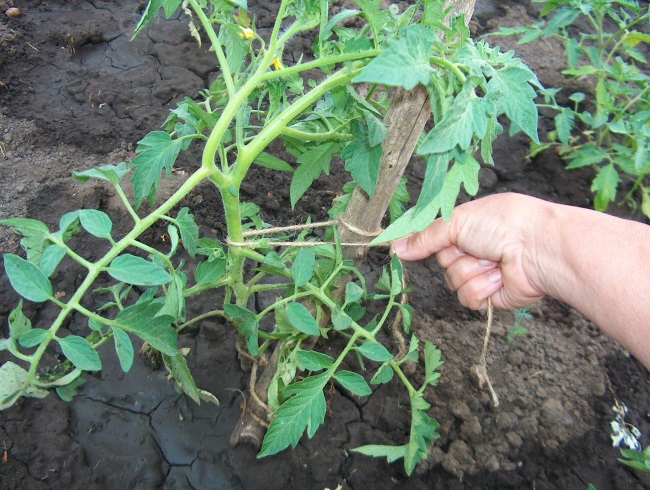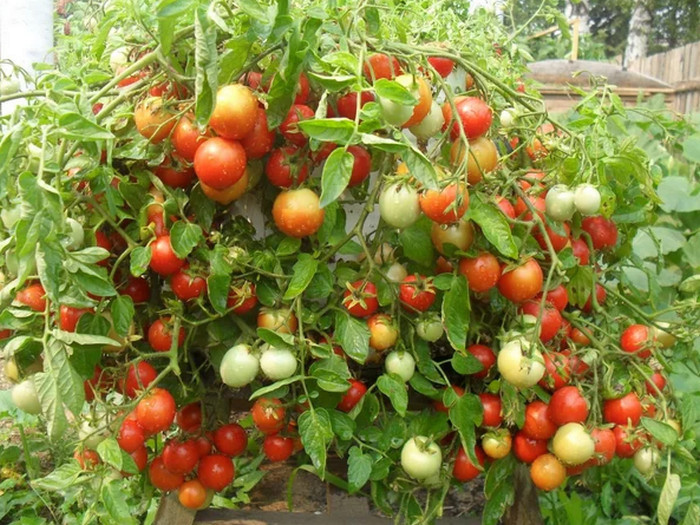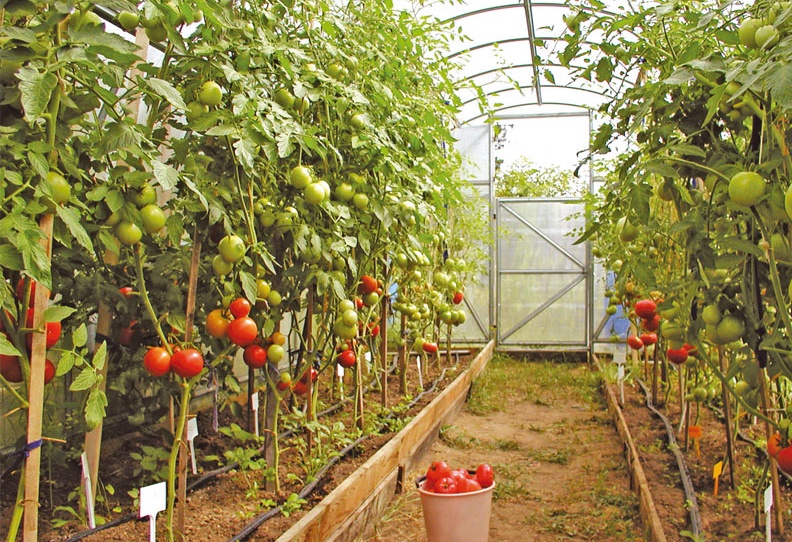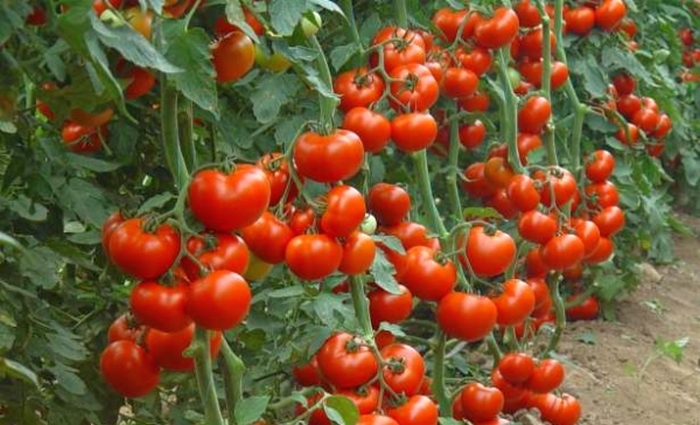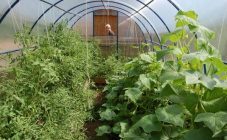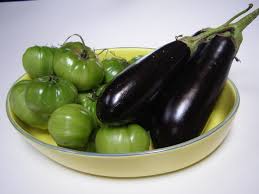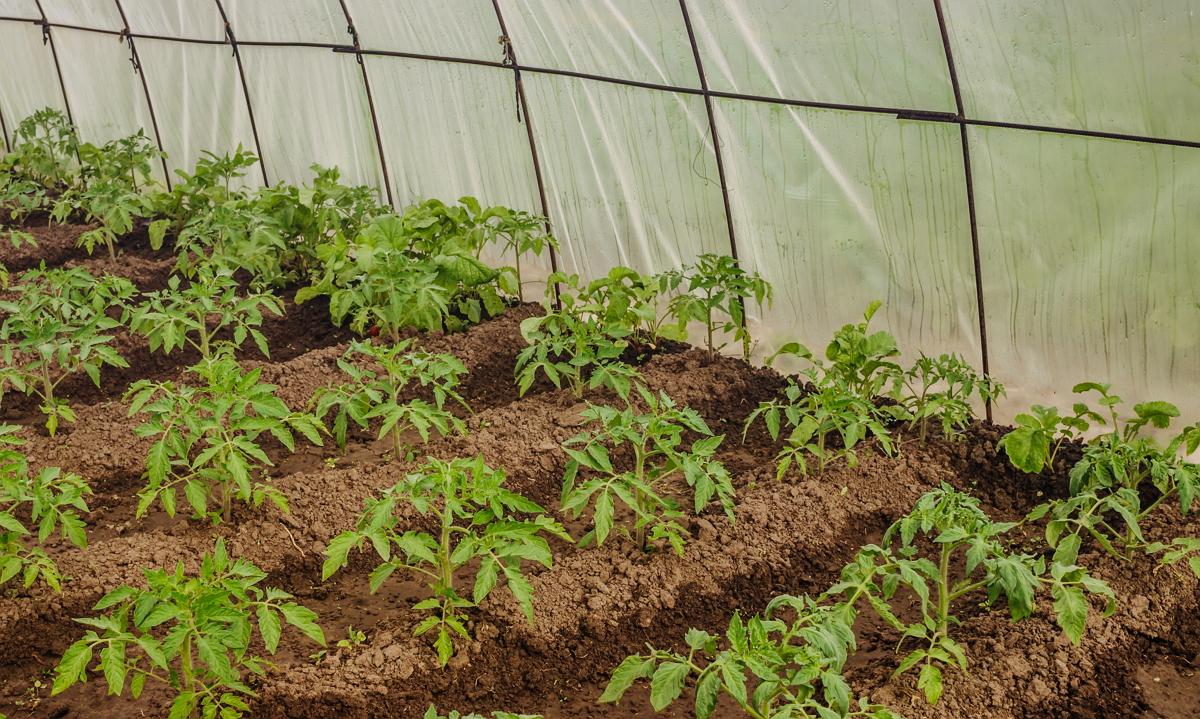Content:
Tall varieties of tomatoes bear fruit abundantly, but the branches become unstable under the weight of large fruits. Therefore, the optimal conditions for growing are greenhouses and high-quality tying.
How to tie up tomatoes in a greenhouse correctly so as not to do any rework in the future? What are the ways to securely fasten branches and stems? What is the best choice for a vegetable grower?
Basic information about culture
Tomato is an annual plant of the nightshade family. Suitable for growing in open or closed ground, on a windowsill, on a balcony.
Previously, the tomato was considered an exotic plant cultivated in Europe. It was brought to Russia in the 18th century. Today it is a common culture with a thin skin and juicy pulp, the seeds are located in the pericarp.
Why do you need to tie up tomatoes?
Tying is a simple but necessary procedure for tall tomatoes after pinching or the appearance of fruit ovaries. Tall tomato varieties with large fruits are vulnerable to gusts of wind, and an additional load is placed on the stem. The correct garter of tomatoes in the greenhouse will contribute to:
- protection of plant stems from breakage, breaking off;
- increase in yield, since under the weight of a large number of fruits, tied up heavy branches will no longer break;
- preventing the development of rot on the leaves, since with upright bushes it will be possible to water directly under the root, moisture will not get on the leaves and the fruits will no longer be;
- exclusion of contact of leaves with wet soil;
- supplying air and light to the seedlings in full in order to accelerate the ripening of tomatoes;
- simplifying the care of seedlings (pinching, fertilizing, weeding) and harvesting from standing bushes.
Garter tomatoes in a greenhouse - methods and devices
There are several known ways to properly tie tomatoes in a greenhouse. Vegetable growers are advised to choose the optimal mounting scheme in advance, even before planting the seedlings in the greenhouse. This will help to avoid alterations in the future, prevent damage to the stems and root system.
It is important to tie up tall tomatoes and do it correctly, since even the strongest and most developed root system is unlikely to withstand overgrown stems that can quickly break under the weight of the fruit as it ripens. Before the garter, the first thing is:
- pinch seedlings;
- establish the optimal type of support, taking into account the specific variety of tomatoes;
- stock up on tying material for work;
- tie up each bush, water abundantly.
The best fastening methods are individual support, wire frame, rope (net) fastening, trellis.
Individual support
This is the best option for small greenhouses and plastic greenhouses with medium or compact tomato bushes. Thick rods, pipes (metal, plastic), wooden pegs are used as a support. For fastening it is necessary:
- install a support next to each seedling so that the height corresponds to the level of the grown bush;
- wrap a strip of fabric around the stem;
- tie to the support.
Horizontal support
A strong rope or long reinforcement is pulled directly under the ceiling of the greenhouse. As a support, you can use perches, slats. Tying the stems of seedlings is done with ropes at a height of 10-12 cm, entangling the stems in several places at once, but without excessive pulling the rope in order to avoid pulling out the bushes even with a slight wind when tied to a horizontal support. When the stems gain strength and become stronger, they themselves will begin to pull the rope with optimal strength.
It is better to tie the rope to small pegs rather than to the stems. The method will help to strengthen the bushes as much as the height of the horizontal support will allow. Even if the stems are very elongated, they will be located directly on the horizontal support in the future.
Wire frame
For construction in a greenhouse, a metal coarse mesh is used to wrap around each seedling. This is a wide tube, suitable for dressing more compact bushes, but with a large number of fruits. The advantage of the wire structure is the ability to attach stems and heavy branches with fruits, dismantle and transfer to another place if necessary. Although harvesting with this method is inconvenient. The option can become costly and time consuming if there are a large number of bushes. Garter stages:
- wrap a metal coarse mesh around each seedling;
- dig slightly into the ground;
- tie the plants with strings to the mesh loops.
Linear mount
The optimal, economical option, although it may not be suitable for tall bushes weighted with clusters. It is used immediately after the arrangement of the greenhouse when growing a large number of tomato bushes. Linear mount step-by-step instructions:
- drive metal tubes into the soil on both sides of the garden bed immediately after arranging the greenhouse for support;
- pull a rope along each row;
- fasten at an equal distance from each other;
- tie seedlings to a cord;
- stretch a wire or rope along the tomato row;
- tie plants to twine.
Rope trellis
An acceptable option for use if beginners do not know how to tie tomatoes in polycarbonate greenhouses. If you plan to grow tomatoes in a greenhouse throughout the year, then it is convenient to install a vertical trellis - an option for tall varieties after cutting off their lateral shoots. A method of tying tall tomatoes in a greenhouse, spreading bushes with fruiting stepchildren will help to keep heavy fruits. The support will not fall or break under the weight. Step-by-step instruction:
- install strong metal poles on the sides of the greenhouse;
- dig into the ground at a distance of 35 cm from each other;
- pull the rope so that you get a strong mesh;
- tie tomato bushes or fasten to plastic clips.
Mesh mount
An alternative to a rope trellis by pulling a plastic or metal mesh between the posts. As the seedlings grow, if necessary, it will be possible to untie the trellis, remove from the hooks, transfer and fix in a new place.
The mesh is attached to the ceiling of the greenhouse so that the bottom edge hangs up to 1 meter above the ground. The upper edge should remain under the ceiling or be laid horizontally for subsequent placement of the lowest stems on it.
You can tie tomatoes to the net on special devices, ribbons and ropes, the size of which should be selected taking into account the length of the stems. The smaller the bushes, the longer the rope should be, it will serve as an additional attachment as the stems are pulled to the net.
Many growers prefer to tie tall tomatoes directly to the roof of the greenhouse. It is convenient and does not require additional investment. Although you will have to tie each stem separately or keep only 1 stem of the tomato. Also, the option is not appropriate when tying tomatoes in a polycarbonate greenhouse.
In order to avoid damage to the roots and stems, in order to simplify the care of seedlings, when choosing the optimal mounting option, it is worth considering:
- variety of tomatoes;
- the height of the bushes;
- yield;
- greenhouse type.
It is necessary to develop a plan and tying scheme in advance.
Twigs, tubes, pegs are the easiest option for tying seedlings that have reached a height of 25-30 cm. Although it is unreasonable to drive in high stakes in a greenhouse, since a strong wind can damage the roof, especially if it is made of thin fragile polycarbonate.
In order to avoid damage to the roots of tomatoes, it is reasonable first of all to drive the pegs into the ground, set up a greenhouse and plant seedlings last. Stages of tying stems:
- driving in pegs, metal rods near each seedling;
- tying with cotton ribbons 4-5 cm wide with loose knots.
It is desirable to drive in a peg or wooden block from the north side of each bush. You need to tie the stems to the slats almost at the very top of the head, twisting 2-3 turns around the peg and tying a loose knot.
Bush Garters
Many farmers find it convenient to use duct tape and a pruning shear cutter that cannot harm the plant stems. It is enough to fix the branches at the required level with their help. The tape is easy to remove, and additional clips will add convenience when tying tomatoes to the trellis.
You can buy reusable plastic tools in stores. It is also convenient to install a trellis support for tall tomatoes. The main thing is that sanitization is carried out before use.
Gardeners often use rags, paper fabrics, twine, nylon tights that will not overlap the plantings, and they can be used several times per season. The optimal stripe width is 2-3 cm.
Material for tying is not suitable, capable of pulling and pinching the stem, damage plants:
- fishing line;
- thin twine;
- wire;
- thin nylon thread.
Hard or thin material will gradually rub, cut the trunks of the seedlings. As a result, this can lead to damage, breakage of bushes.
Convenient plastic clips, fastened with one movement of the hand and withstand any load. They can be used many times, and it is not difficult to choose the sizes taking into account the volume of branches, stems and even fruits. You can tie up tomatoes in a polycarbonate greenhouse using a fiber thread, a thin rope, cord, tape.
Many gardeners in the old fashioned way tie up tomatoes with shreds of cloth, driving in pegs near the stems. But in order to avoid damage to young immature seedlings by diseases, the material must be of high quality: it should not deteriorate, break off from the wind, watering. It is reasonable to use synthetics for garters of tomatoes, but the fabric should not stretch too much, otherwise it can cut the tomato stems and lead to fungal infection.
If fabric strips are used, then it is preliminarily recommended to soak them in a disinfectant solution or boil them. You need to tie up the seedlings carefully, without bending the main stem, without pressing strongly with matter. There should be no contacts between the barrel, rag and stakes.
Tips
For beginners and experienced gardeners, you can give a few tips:
- It is not recommended to tie the stem to the support with a figure eight to avoid possible confusion.
- It is desirable to produce a garter not only of the stems, but also of weighty brushes of fruits for their own safety.
- Individual stakes as a method of tying are more suitable for medium-sized varieties of tomatoes, and the trellis is more suitable for tall varieties.
- You should not allow the fruits to come into contact with the soil in order to avoid being affected by late blight.
- It is imperative to tie up the tomatoes when their stems begin to bend slightly in the ground so that they do not deform.
- It is best to build a complex support structure. The more complex it is, the easier the process of growing tomatoes will be.
- When choosing a material, it is worth considering the tying time, the degree of formation of the bush. Of course, the wire is not suitable for young seedlings, since it begins to pull the stems, it can damage the lashes, and the formation of an unmarketable look in tomatoes.
- Moisture should freely flow to the upper parts of the bushes, which should be considered when choosing a material for garter tomatoes.
A competent choice of the garter method will increase the yield of tomatoes. Tying tall, high-yielding tomato bushes is an important step in growing. The main thing is to take into account the conditions of the terrain, the design of the greenhouse, the stage of growth of the vegetable in order to make it easier for yourself in the future, and also to be able to change the mount when the bushes get stronger and grow strongly.
